Keywords
|
| fuzzy logic, neuro fuzzy logic, image quality indices, root mean square error, peak signal to noise ratio, correlation coefficient. |
INTRODUCTION
|
| Any piece of paper makes sense only when it is able to convey the information across. The clarity of information is important. Image Fusion is a mechanism to improve the quality of information from a set of images. By the process of image fusion, the good information from each of the given images is fused together to form a resultant image whose quality is superior to any of the input images. This is achieved by applying a sequence of operators on the images that would make the good information in each of the image prominent[20]. The resultant image is formed by combining such magnified information from the input images into a single image. |
| The input images may be from different sensors[9], medical images[11,16], remote sensing images[7]. Image fusion aims at aggregating two or multiple images from same information sources, so as to achieve improved accuracy and robust inference performance by utilizing redundancy and complementariness in information. It is used for medical di agnostics and treatment. A patient’s images in different data formats can be fused. These forms can include magnetic resonance image (MRI), computed tomography (CT), and positron emission tomography (PET). In radiology and radiation oncology, these images serve different purposes. For example, CT images are used more often to ascertain differences in tissue density while MRI images are typically used to diagnose brain tumors. Image fusion is also used in the field of remote sensing wherein multivariate images like thermal images, IR Images, UV Images, ordinary optical image etc can be fused together to get a better image taken from a satellite. |
LITERATURE SURVEY
|
| Harpreet Singh [1] proposed an algorithm in 2004 for pixel level image fusion with fuzzy and adaptive neuro fuzzy approaches in spatial domain. Fusion of medical images and remote sensing images has been done. Result of fusion processes are given in terms of entropy and variance. In 2005 [2] gave an iterative algorithm for image fusion using fuzzy and neuro fuzzy. Authors found this technique very useful in medical imaging and other areas. M.Seetha, I.V. Murali Krishna [3] told the potentials of image fusion as tool for improving the performance of low resolution images. |
| It also provided the assessment and systematic performance analysis of conventional and wavelet image fusion techniques quantitatively. Manjusha Deshmukh [4] presented the utilization of image fusion of PET and MRI images. This paper provide PCA based image fusion and also focuses on image fusion algorithm based on wavelet transform to improve resolution of images in which two images to be fused are firstly decomposed then algorithm works and again reconstructed in the result images. Deepak Kumar Sahu, M.P. Parsai [5] presented the literature review on some of the important image fusion techniques like Primitive fusion(Averaging method, Select Maximum, Select Minimum), fusion based on Discrete Wavelet transform, Principal component analysis(PCA) based fusion etc. Zhu Mengyu, Yang Yuliang [6] presented an image fusion algorithm based on fuzzy logic and wavelet transform. Pixel level image fusion algorithms have been analyzed using visible and infrared image fusion and a new algorithm is proposed based on Discrete Wavelet Transform(DWT) and Fuzzy Logic. |
WAVELET TRANSFORM
|
| Wavelet transforms are based on small waves, called wavelets, of varying frequency and limited duration. This allows us to provide the equivalent of a musical score for an image, revealing not only what notes(or frequencies) to play but also when to play them. In 1987, wavelets were first shown [22] to be the foundation of a powerful new approach to signal processing and analysis called multi resolution theory. It is concerned with the representation of and analysis of signals and images at more than one resolution. If we look at the fourier transform it gave us the frequency representation of the signal but we would not know that where the high and low frequency take place. The alternative to this problem is that we have to go with the shorter and shorter frames, only then we can extract such kind of localization property better. |
| In the case of images we have two dimensional signal so, we have to apply wavelet transform in both the directions i.e. horizontal as well as vertical. So, we can define four filters depending on two directions. Suppose S(n1,n2) is an image. |
 |
| In Fig 2.1 and Fig 2.2 The forward and reverse wavelet transform has been shown for images. |
ADAPTIVE NEURO FUZZY INFERENCE SYSTEM (ANFIS)
|
| The basic structure of the fuzzy inference system is that it is a model that maps input characteristics to input membership functions, input membership function to rules, rules to a set of output characteristics, output characteristics to output membership functions, and the output membership function to a single-valued output or a decision associated with the output. We have considered only fixed membership functions that were chosen arbitrarily. We have applied fuzzy inference to only modeling systems whose rule structure is essentially predetermined by the user's interpretation of the characteristics of the variables in the model. |
| In ANFIS we apply fuzzy inference techniques to data modeling. As we have seen from the other fuzzy inference, the shape of the membership functions depends on parameters, and changing these parameters change the shape of the membership function. Instead of just looking at the data to choose the membership function parameters, we choose membership function parameters automatically. |
ALGORITHM USING WAVELET TRANSFORM AND ANFIS
|
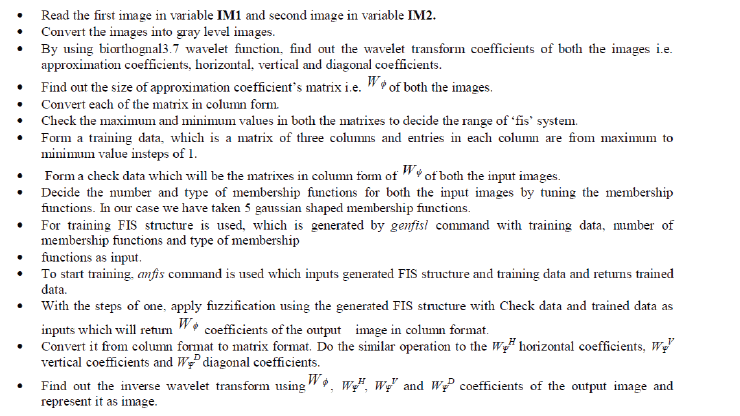 |
IMPLEMENTATION
|
| For the implementation of our work we will use MATLAB version 7.10.0(R2010a). It offers the various toolboxes for different types of works. Among them we will use two toolboxes a) Wavelet Toolbox™ and b) Fuzzy Logic Toolbox™. The toolboxes can be used either by Graphical User Interface (GUI) or command line. We will use command line approach because we have to combine two toolboxes. First we have done image fusion in spatial domain, in which fusion using simple fuzzy logic and neuro fuzzy logic algorithms have been used. Apart from this fusion in transform domain is also done using fuzzy logic for combining the coefficients of the input images and Adaptive Neuro Fuzzy Inference system(ANFIS) i.e proposed algorithm. |
IMAGE QUALITY MATRICES
|
| Image Quality is a characteristic of an image that measures the perceived image degradation. Imaging systems may introduce some amounts of distortion or artifacts in the signal, so the quality assessment is an important problem. We have used for quality matrices which are given below. |
a. Root Mean Square Error(RMSE)
|
| To find RMSE we have to first calculate Mean Square Error(MSE) which is given by the following relation, |
 |
| Where m is the height of the Image implying the number or pixel rows. |
| n is the width of the image, implying the number of pixel columns. |
| Aij being the pixel density values of the input image. |
| Bij being the pixel density values of the fused image. |
| To calculate RMSE from MSE we take square root of MSE. |
| Root Mean square error is one of the most commonly used error projection method where, the error value is the value difference between the input data and the resultant data. |
b. Peak Signal to Noise Ratio(PSNR)
|
| The mathematical relation for PSNR is given below, |
 |
| PSNR is defined as log of the ratio between the square of the peak value to the Mean Square Error multiplied to the value 10. This basically projects the ratio of the highest possible value of the data to the error obtained in the data. 5 In our case, at pixel level, the highest possible value is 255. i.e. in a 8 bit grayscale image, the maximum possible value is having every bit as 1 –> 11111111; which is equal to 255. Then the error between the fused image and the input image is calculated as the Mean Square Error and the ratio value is obtained. If both the fused and the input images are identical, then the MSE value would be 0. In that case, the PSNR value will remain undefined. |
c. Entropy(H)
|
| Entropy is defined as amount of information contained in a signal[4]. Shannon was the first person to introduce entropy to quantify the information. The entropy of the image can be evaluated as, |
 |
| Where G is the number of possible gray levels, P(di) is probability of occurrence of a particular gray level di . Entropy can directly reflect the average information content of an image. The maximum value of entropy can be produced when each gray level of the whole range has the same frequency. If entropy of fused image is higher than parent image then it indicates that the fused image contains more information. |
d. Correlation coefficient
|
| The correlation coefficient measures the closeness or similarity in small size structures between the original and the fused images. It can vary between -1 and +1.Values close to +1 indicate that they are highly similar while the values close to -1 indicate that they are highly dissimilar. The ideal value is one when the reference and fused are exactly alike and it will be less than one when the dissimilarity increases. |
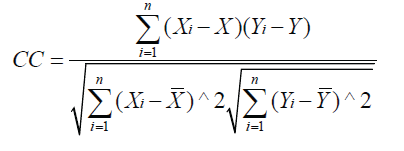 |
| Where Xi is the intensity of the ith pixel in image1, Yi is the intensity of the ith pixel in image2, X is the mean intensity of image1 and Y is the mean intensity of image2.q |
EXPERIMENTAL RESULTS AND DISCUSSION
|
| We have used two set of images one is the set of MRI images of brain and other is the set of satellite images of Gateway of India, Mumbai, India. The input images are gray level images. The input, fused images and comparison table are given below. |
a. Fusion in spatial domain using Fuzzy Logic
|
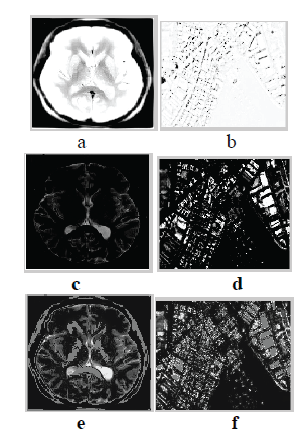 |
| The images a, b, c, d are the input images and e and f are fused images. |
b. Fusion in spatial domain using Adaptive Neuro Fuzzy Inference System(ANFIS)
|
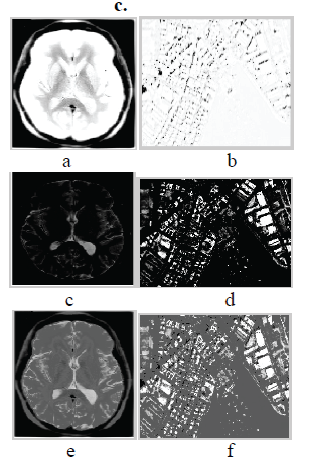 |
| Here again a, b, c, d are the input images, e and f are fused images. |
d. Fusion in Transform domain using Fuzzy Logic.
|
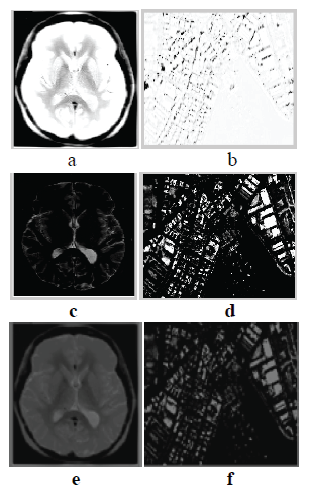 |
| a, b, c, d are input images, e and f are fused images. After fusing a and c we got image e and fusing b and d we got image f. |
e. Fusion using the proposed algorithm using Wavelet Transform and ANFIS.
|
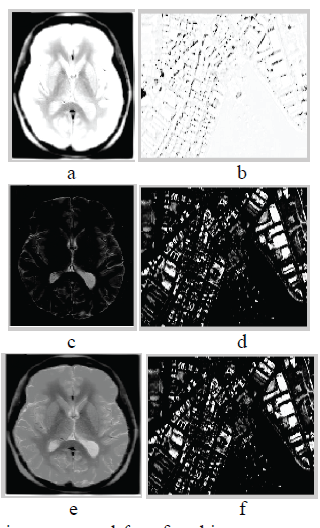 |
| Here also Images a, b, c, d are input images, e and f are fused images. |
f. Comparison Tables
|
| From the above tables, let us first discuss for the fusion of images of brain. In Table 1, the value of entropy(H) for the fused image using proposed algorithm is 6.0182, which is maximum among the other algorithms. Value of Root Mean Square Error(RMSE) is also minimum among all other techniques. The value of Peak Singnal to Noise Ratio(PSNR) is also maximum of all along with the correlation coefficient. |
| Now come to table 2, here we are having values of image quality measures for fusion of the images of ‘Gateway of India’. The value of entropy by using the proposed technique, of the fused image is 5.7262, which is also maximum of all the other techniques. The RMSE is having value 1.1054 , which is not the minimum but close to it. PSNR is having value 94.589, maximum among all the other techniques and correlation coefficient having value 0.52 is also maximum of all. |
CONCLUSION
|
| In this paper the potential of image fusion in transform domain using wavelet transform and Adaptive Neuro Fuzzy Inference System(ANFIS), has been explored along with the quality assessment evaluation measures. The experimental results have shown that the proposed algorithm using the mentioned technique gives considerable improvement for image fusion. |
Tables at a glance
|
 |
 |
| Table 1 |
Table 2 |
|
Figures at a glance
|
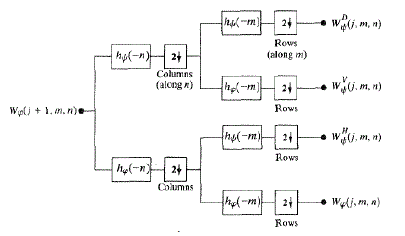 |
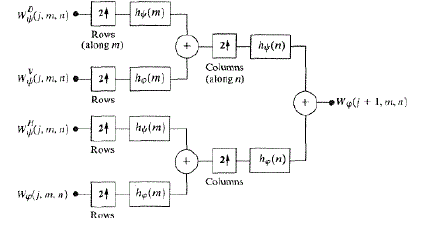 |
| Figure 1 |
Figure 2 |
|
References
|
- Harpreet Singh, Jyoti Raj, GulsheenKaur, Thomas Meitzler, “Image Fusion using Fuzzy Logic and Applications,” IEEE Conference, Budapest, Hungary,2004.
- Rahul Ranjan, Harpreet Singh, Grant R. Gerhart, “Iterative Image Fusion Technique using Fuzzy and Neuro Fuzzy Logic and Applications,” IEEE Annual Meeting of the North American Fuzzy Information Processing society,2005.
- M.Seetha, Dr. I.V.Murali Krishna, B.L. Deekshatulu, “Data Fusion Performance Analysis based on Conventional and Wavelet Transform Technique,” IEEE conference, 2005.
- ManjushaDeshmukh, UdhavBhosale, “Image Fusion and Image Quality Assessment of Fused Images,” International Journal of Image Processing(IJIP), Pages 484-508, Volume(4):Issue(5).
- Deepak Kumar Sahu, M. P. Parsai, “Different Image Fusion technique- Acritical Review,” International Journal of Modern Engineering Research(IJMER), Pages 4298-4301, Vol. 2, Issue:5,2012.
- Zhu Mengyu, Yang Yuliang, “A New Image Fusion Algorithm Based on Fuzzy Logic,” IEEE International Conference on Intelligent Computation Technology and automation,2008.
- Xu-Hong Yang, Fu-Zhen Huang, Gang Liu, “ Urban Remote Image Fusion Using Fuzzy Rules,” Proceedings of the Eighth International Conference on Machine Learning and Cybernetics, Baoding, 12-15 July 2009.
- Yang-Ping Wang, Jian-Wu Dang, Sha Li, “ Multimodal Medical Image Fusion Using Fuzzy Radial Basis Function Neural Networks,” Proceedings of International Conference on Wavelet analysis and Pattern Recognition, Beijing, China, 2-4 Nov, 2007.
- Yi Zheng, Ping Zheng, “ Multi sensor Image Fusion using Fuzzy Logic for surveillance system,” Seventh International Conference on Fuzzy Systems and Knowledge Discovery, 2010.
- ShivsubramaniKrishnamorthy, K P Soman, “ Implementation and Comparative study of Image Fusion algorithms,” International Journal of Computer Applications, Volume 9, November 2010.
- JionghuaTeng, Suhuan Wang, Jingzhou Zhang, Xue Wang, “ Neuro-Fuzzy Logic Based Fusion Algorithm of Medical Images,” IEEE, International Congress on Image and Signal Processing, 2010.
- LabibArafeh, Harpreet Singh, Susil K. Putatunda, “A Neuro Fuzzy Logic Approach to Material Processing,” IEEE Transactions on Systems, Man and cybernetics- Part c: Applications and Reviews, Vol. 29, No. 3, August,1999.
- Yong Yang, “ A Novel DWT Based Multi Focus Image Fusion Method,” International Conference on Advances in Engineering,2011.
- SrinivasaRao, Seetha M, Krishna Prasad MHM, “Comparison of Fuzzy and Neuro Fuzzy Image Fusion Techniques and its Applications,” International Journal of Comuter Applications, Page no. 31-37, Volume 43, April 20, 2012.
- SrinivasaRaoDammavalam, Seetha M, HazarathMunaga, “ Iterative Image Fusion using Neuro Fuzzy Logic and Applications,” IEEE, 2012.
- AditiRana, ShavetaArora, “ Comparative Analysis of Medical Image fusion,” International Journal of Computer Applications, Volume 73, July 2013.
- Li-HuiHui, Guo Lei, Liu Hang, “ Current Research on Wavelet-based Image Fusion Algorithms,” www.paper.edu.cn .
- JIA Yong-hong, Li de-ren, SUN Jia-bing “Multidimentional Remote Sensing Imagery Data Fusion” Remote Sensing Technology and Application 2005,15 (1) : 41-44.
- H. Li, B. S. Manjunath, and S. K. Mitra. Multisensor image fusion using the wavelet transform. Graphical Models and Image Processing 1995; 57: 235–245.
- ShivsubramaniKrishnamoorth, “Development of Image Fusion Techniques And Measurement Methods to Assess the Quality of the Fusion,” M.S. Thesis, July 2008.
- L. Zadeh, “Fuzzy Sets.” Inform. Contr., vol. 8,no. 3.pp. 338-353,1965.
- Rafael C Gonzalez, Richard E Woods , “ Digital Image Processing, Second Edition.”
|